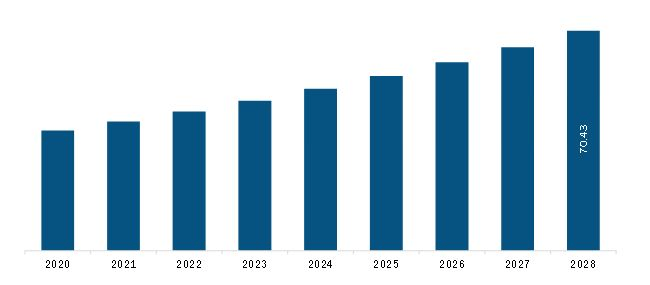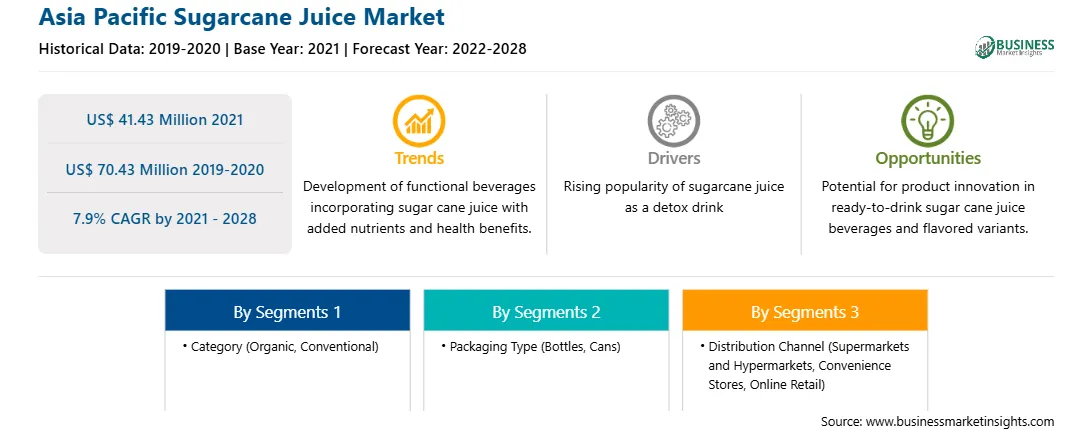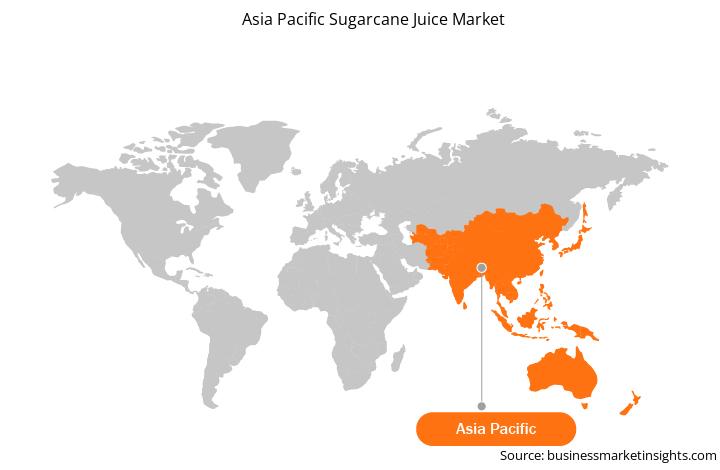Cold pressing is the technique of preserving fresh food and beverages using the high-pressure processing (HPP) method instead of heat treatment. The pressure applied during cold pressing is up to 87,000 pounds per square inch. Cold pressing inhibits microbial growth on a structural level while retaining the flavor and quality that is destroyed by heat and chemical pasteurization. This process of extracting juice keeps the original flavor while retaining more nutrients, including vitamins, minerals, and enzymes. Cold-pressed sugarcane juice is becoming increasingly popular, owing to its high nutritional benefits over conventional alternatives. Vitamins A, B1, B2, B3, B5, B6, C, calcium, cobalt, copper, iron, magnesium, manganese, phosphorus, potassium, zinc, antioxidants, chlorophyll, proteins, and soluble fiber are all found in fresh, raw, unpasteurized sugar cane juice. Moreover, manufacturers are making significant investments in machinery and equipment for launching cold-pressed sugarcane juice. For instance, companies like Raw Pressery and Kauai Pharmacy offer cold-pressed sugarcane juice manufactured in their state-of-the-art manufacturing units. However, the Food and Drug Administration (FDA) requires that all juices be pasteurized before the sale unless the juice manufacturer is selling directly to the consumer. The raw, unpasteurized, and cold-pressed sugarcane juice is hardly available in retail stores across the US. However, with the rising popularity of cold-pressed sugarcane juice, the products will undoubtedly occupy the retail shelves in the future.
The COVID-19 pandemic severely affected many industries, such as the food & beverage industry, across Asia-Pacific. Due to the shutdown of manufacturing units, disruption of supply chains, and shortage of raw material, there was a massive slump in production volumes and distribution. However, people in the region are aware regarding the nutritional benefits of consuming natural sugarcane juice. Moreover, as sugarcane juice boosts immunity and helps combat various diseases, its demand remained steady in Asia-Pacific countries. However, due to supply chain disruptions, a shortfall in product supply was witnessed, which restrained the growth of the sugarcane juice market in the region.
With the new features and technologies, vendors can attract new customers and expand their footprints in emerging markets. Thus, the Asia Pacific sugarcane juice market is expected to grow at a good CAGR during the forecast period.

Strategic insights for the Asia Pacific Sugarcane Juice provides data-driven analysis of the industry landscape, including current trends, key players, and regional nuances. These insights offer actionable recommendations, enabling readers to differentiate themselves from competitors by identifying untapped segments or developing unique value propositions. Leveraging data analytics, these insights help industry players anticipate the market shifts, whether investors, manufacturers, or other stakeholders. A future-oriented perspective is essential, helping stakeholders anticipate market shifts and position themselves for long-term success in this dynamic region. Ultimately, effective strategic insights empower readers to make informed decisions that drive profitability and achieve their business objectives within the market.

| Report Attribute | Details |
|---|---|
| Market size in 2021 | US$ 41.43 Million |
| Market Size by 2028 | US$ 70.43 Million |
| Global CAGR (2021 - 2028) | 7.9% |
| Historical Data | 2019-2020 |
| Forecast period | 2022-2028 |
| Segments Covered |
By Category
|
| Regions and Countries Covered | Asia-Pacific
|
| Market leaders and key company profiles |
The geographic scope of the Asia Pacific Sugarcane Juice refers to the specific areas in which a business operates and competes. Understanding local distinctions, such as diverse consumer preferences (e.g., demand for specific plug types or battery backup durations), varying economic conditions, and regulatory environments, is crucial for tailoring strategies to specific markets. Businesses can expand their reach by identifying underserved areas or adapting their offerings to meet local demands. A clear market focus allows for more effective resource allocation, targeted marketing campaigns, and better positioning against local competitors, ultimately driving growth in those targeted areas.

The Asia Pacific Sugarcane Juice Market is valued at US$ 41.43 Million in 2021, it is projected to reach US$ 70.43 Million by 2028.
As per our report Asia Pacific Sugarcane Juice Market, the market size is valued at US$ 41.43 Million in 2021, projecting it to reach US$ 70.43 Million by 2028. This translates to a CAGR of approximately 7.9% during the forecast period.
The Asia Pacific Sugarcane Juice Market report typically cover these key segments-
The historic period, base year, and forecast period can vary slightly depending on the specific market research report. However, for the Asia Pacific Sugarcane Juice Market report:
The Asia Pacific Sugarcane Juice Market is populated by several key players, each contributing to its growth and innovation. Some of the major players include:
The Asia Pacific Sugarcane Juice Market report is valuable for diverse stakeholders, including:
Essentially, anyone involved in or considering involvement in the Asia Pacific Sugarcane Juice Market value chain can benefit from the information contained in a comprehensive market report.